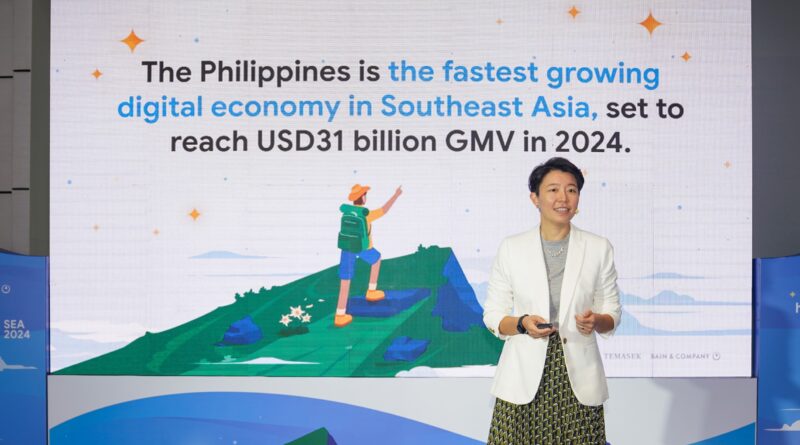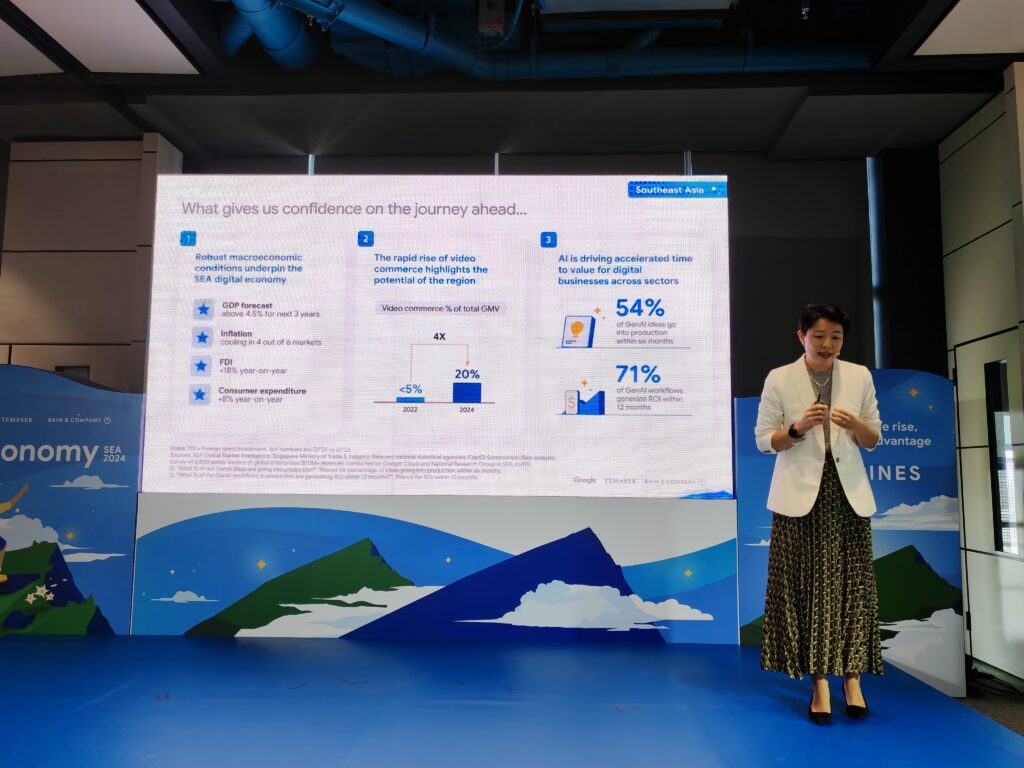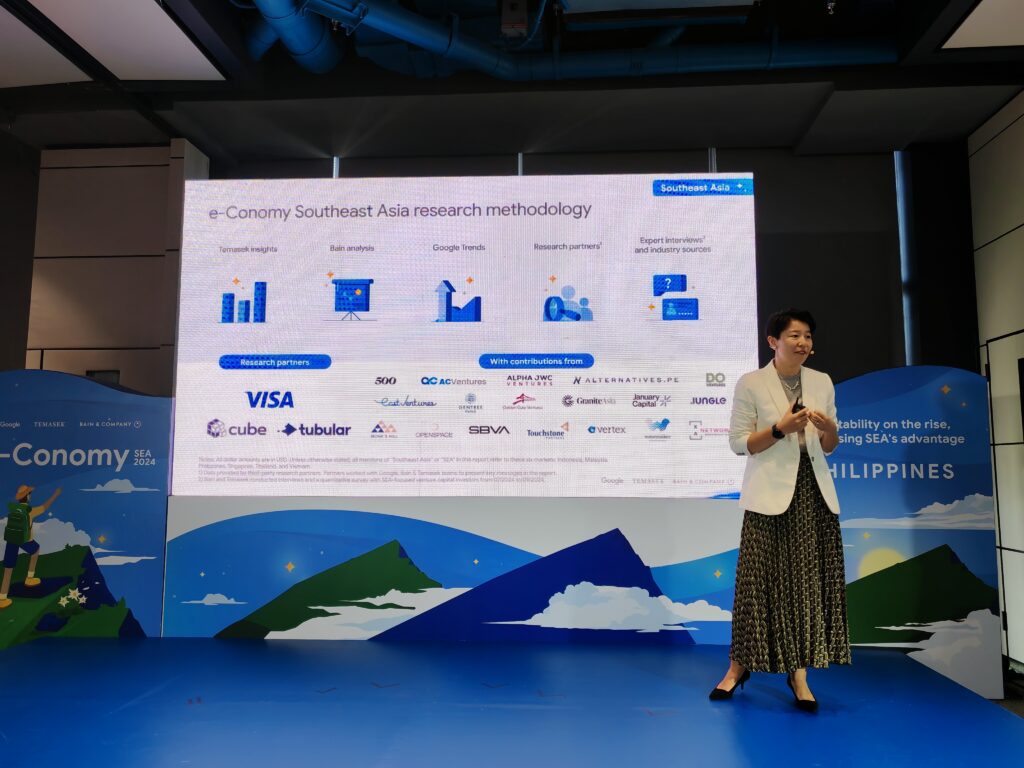e-Conomy SEA 2024: Philippine Digital Economy Takes the Lead in Southeast Asia
e-Conomy SEA 2024: Philippine Digital Economy Takes the Lead in Southeast Asia
Manila, Philippines – The Philippine digital economy has emerged as the fastest-growing in Southeast Asia (SEA), with its gross merchandise value (GMV) projected to rise from $26 billion in 2023 to $31 billion this year. This impressive growth is highlighted in the latest e-Conomy SEA report titled “Profits on the rise, harnessing SEA’s advantage,” jointly published by Google, Temasek, and Bain & Company.
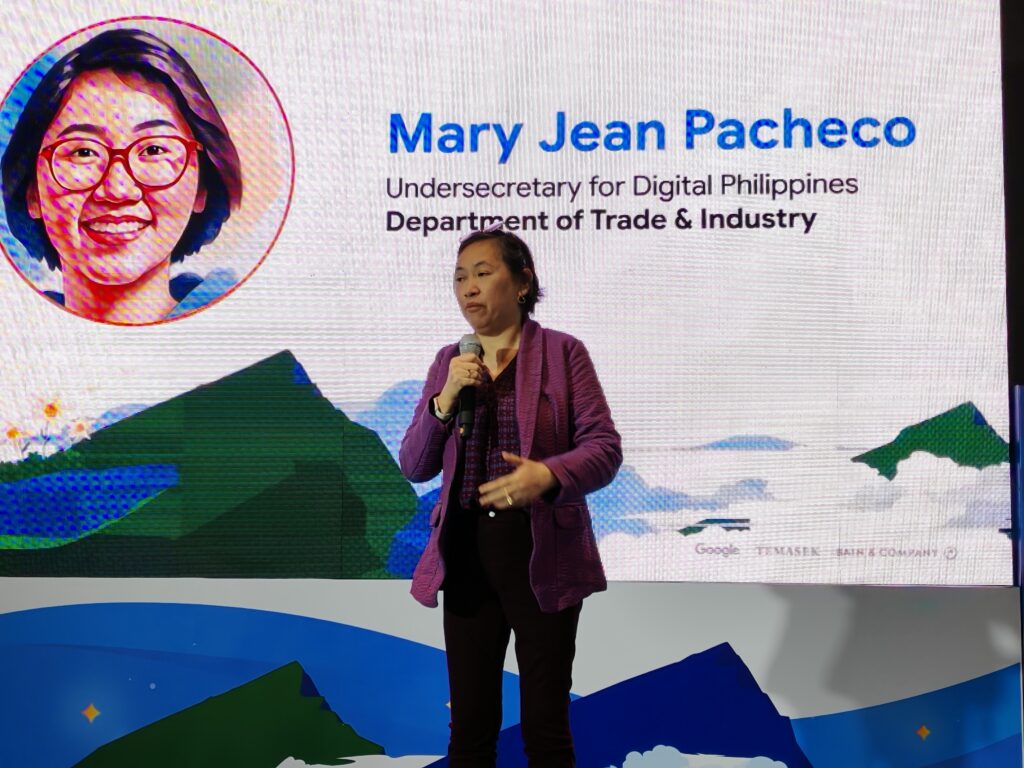
Unprecedented Growth Across Digital Sectors
The report underscores the significant expansion across various digital sectors in the Philippines, driven by robust domestic consumption, a revitalized services sector, and consistent remittances from overseas workers. Key sectors contributing to this growth include e-commerce, online travel, online transport and food delivery, online media, and digital financial services.
E-commerce: Leading the Charge
The Philippines boasts the fastest-growing e-commerce industry in Southeast Asia, accelerating at a rate of 23% to reach a GMV of $21 billion in 2024. This rapid growth is attributed to major e-commerce platforms reinvesting in GMV growth and the surge of video commerce, enhancing the online shopping experience for consumers.
Online Travel: Rebounding with Vigour
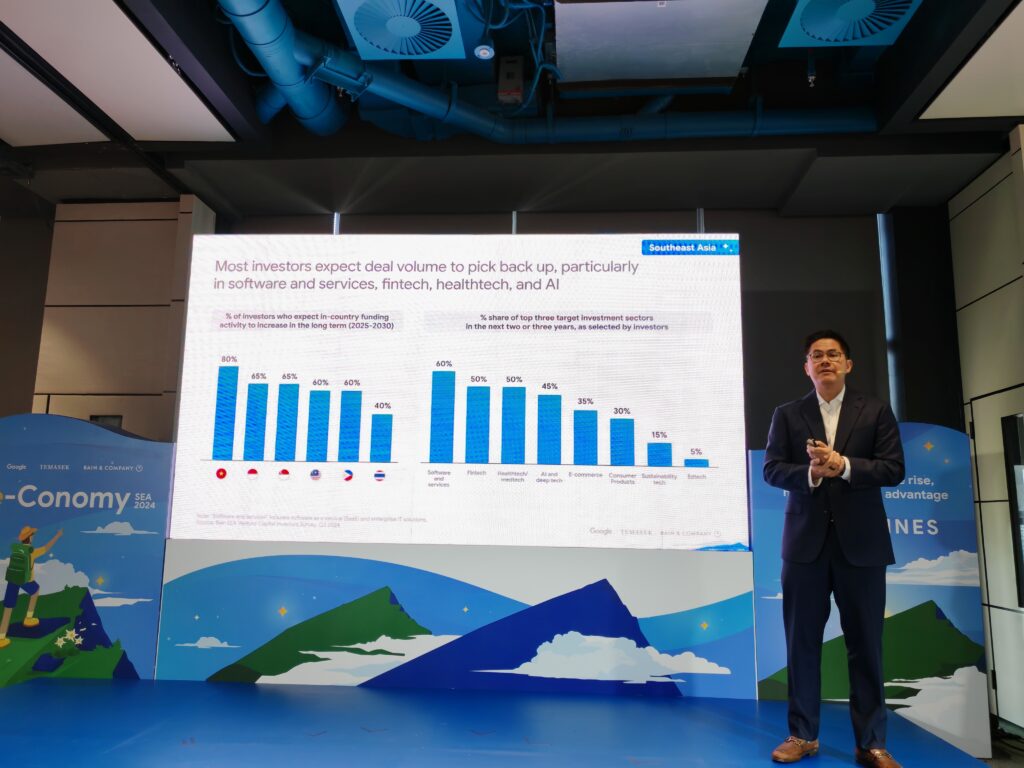
The online travel sector in the Philippines is on a significant upswing, with projections to close 2024 at $3 billion in GMV, marking a 13% increase from the previous year. Filipino outbound travel spending has skyrocketed by 450% since 2020, the highest increase in SEA, predominantly within the Asia-Pacific region, driven largely by shopping expenses.
Online Transport and Food Delivery: Consistent Growth
Alongside Indonesia, the Philippines’ online transport and food delivery sector has grown by 13%, expected to hit $3 billion in GMV this year. Food delivery platforms are diversifying revenue through tiered delivery options and subscription plans, while the competitive landscape of ride-hailing remains intense with the entry and expansion of various players.
Online Media: Thriving Entertainment Sector
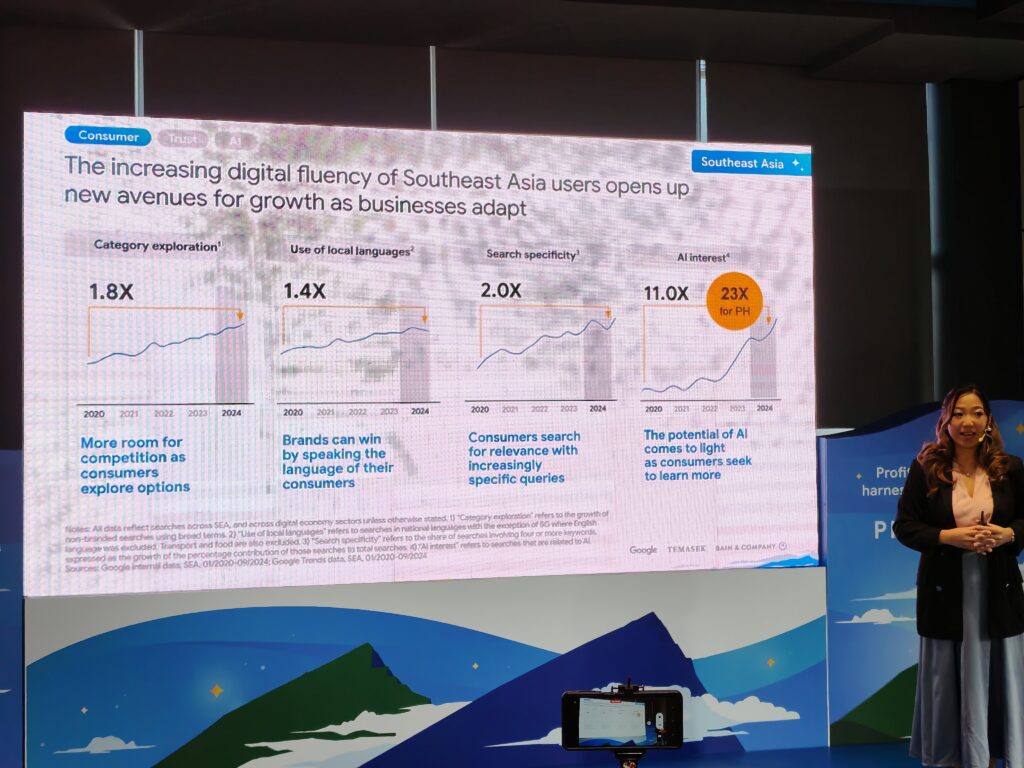
Online media, which includes video streaming, music streaming, and gaming, continues to thrive with a projected GMV of $4 billion this year, a 12% increase driven by strong advertising revenue. This sector highlights the growing consumer demand for diverse and accessible digital entertainment.
Digital Financial Services: Surging Digital Payments
The Philippines leads Southeast Asia in the growth of digital financial services, particularly digital payments, which surged by 22% to reach a GTV of $125 billion in 2024. This growth encourages service providers to maintain competitive fees while enhancing security and reliability. Super-apps offering comprehensive features are expected to dominate the market.
AI Adoption: The Next Frontier
The Philippines is well-positioned to be a leader in AI adoption, driven by a young, digitally savvy population, strong English language proficiency, and a supportive tech-positive government. The country ranks among the top 10 globally for AI-related searches, with interests spanning education, marketing, and gaming. This indicates a widespread embrace of AI beyond Metro Manila, in regions like CALABARZON, Central Luzon, and Davao.
Investment in Digital Infrastructure
The resurgence of investment in digital infrastructure underscores the renewed confidence in the Philippines’ digital potential. Private funding has reached P0.2 billion in the first half of 2024, with nascent sectors receiving around 60% of these investments. Notable initiatives, such as the $288-million Philippine Digital Infrastructure Project, aim to enhance connectivity in rural areas and expand existing infrastructure. These efforts are further supported by government policies focused on online safety, digital service regulation, and creating a secure, competitive digital environment.
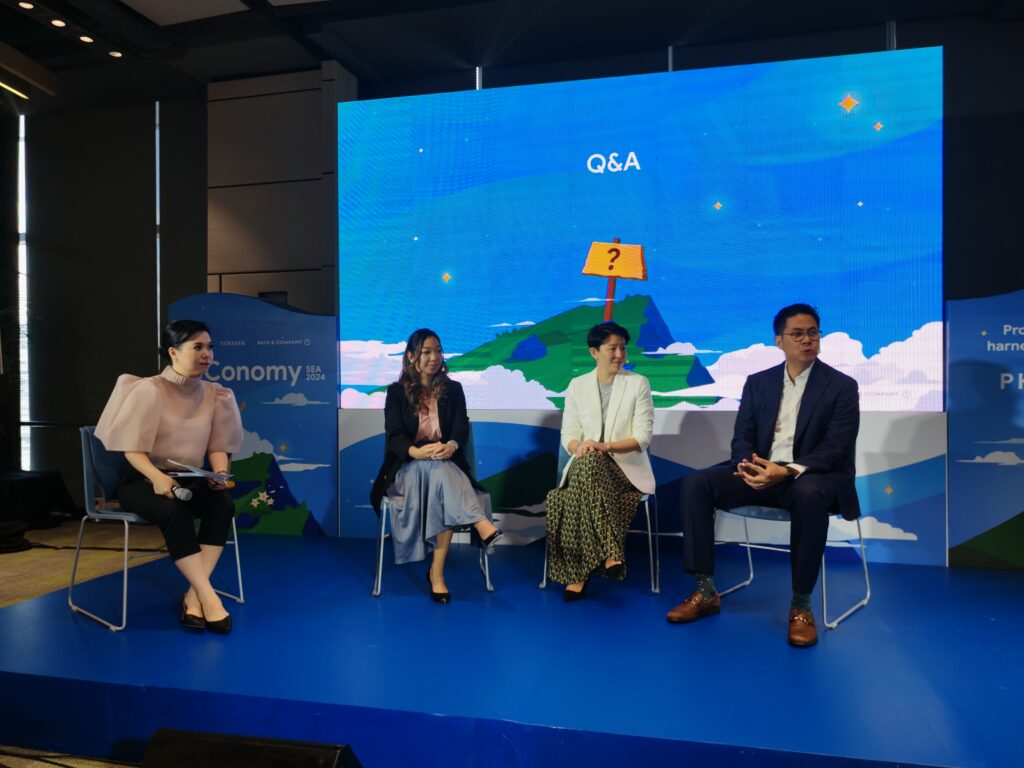
Government Support and Strategic Initiatives
e-Conomy SEA 2024: Philippine government’s strategic initiatives have significantly contributed to the digital economy’s growth. “The country’s whole-of-government approach fosters economic growth, drives innovation, and ultimately improves the lives of all Filipinos,” said Hon. Maria Cristina Roque, Secretary, Department of Trade and Industry. Key efforts include the DTI’s digitalization of MSMEs, DICT’s acceleration of digital infrastructure, BSP’s promotion of digital payments, DOF’s digital taxation policies, and legislative support from Congress.
The e-Conomy SEA 2024 report highlights the Philippines’ remarkable digital economy growth, driven by strong sectoral performance and strategic government support. As the country continues to invest in digital infrastructure and embrace AI, it is poised to maintain its leadership in Southeast Asia’s digital landscape.
Read the full e-Conomy SEA Report 2024 here.

